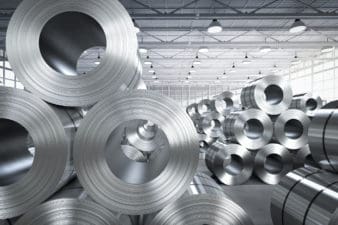This year started off so well for Goldcorp Inc. (TSX:G)(NYSE:GG), with its stock price surging in January. That enthusiasm, however, quickly wore off, and the company’s stock started on a steady slide.
Here’s what weighed on the company’s stock in 2015.
It all starts with gold
Being a gold miner, there’s a lot of correlation between Goldcorp’s stock price and the price of gold. That’s pretty clear by looking at a chart of the price of gold, which, like Goldcorp’s stock price, surged in January only to fade the rest of the year.
The reason gold faded down the stretch had a lot to do with market worries that the U.S. Federal Reserve would raise interest rates. This was seen as being bad for gold because inflation worries cause the gold price to rise, so the thought that the Fed would keep inflation at bay deflated the price of gold.
That said, weaker gold prices weren’t the only thing weighing on Goldcorp’s stock this year.
A frustrating start in Argentina
The root of Goldcorp’s troubles this year can really be traced back to 2014. In February the company reported its fourth-quarter results for 2014, and they not only missed expectations pretty badly due to lower gold prices and higher costs, but those results included a multi-billion write-down on the value of one of the company’s newest mines.
That write-down was due to issues at its Cerro Negro mine in Argentina after high inflation and import and currency restrictions led to a deep impact to the mine’s present value. Investors gave the company a big thumbs down after the report, leading to an 8.4% sell-off the day it was released.
Same story, different quarter
Goldcorp’s first-quarter report wasn’t any better–the company reported another weak quarter. It missed analysts’ expectations again due to lower gold prices and higher cash costs. While the company’s gold production jumped thanks to new contributions from Cerro Negro and another mine, that wasn’t enough to offset higher costs and lower gold prices.
Balance sheet concerns grow but are then quickly erased
With US$3.5 billion of debt on its balance sheet as of the end of the first quarter, there was some growing concern in the market earlier this year that the company’s balance sheet was in trouble given the weakness in gold prices. Those weak prices, when combined with its recent poor execution, caused some analysts to speculate that the company might need to either cut its capex or borrow more money to maintain its dividend.
These fears were quickly erased when the company sold its stake in fellow miner Tahoe Resources in a secondary offering that brought in $998 million. That deal significantly cleaned up the company’s balance sheet and dramatically reduced its cash needs.
It didn’t work
Despite significantly improving its balance sheet, the company still didn’t feel comfortable maintaining its dividend given its cash needs and the slumping gold price. That led to a 60% dividend cut at the end of July in a move aimed at saving the company nearly US$300 million a year. It’s a move that didn’t sit well with investors, many of whom were drawn to the company’s relatively high payout.
Investor takeaway
This was a tough year for Goldcorp investors. Some factors were beyond the company’s control, namely gold prices. However, the company also struggled with higher costs leading to weaker-than-expected quarterly performances. Further, despite a vast improvement to its balance sheet, that wasn’t enough to save the dividend from being cut, giving investors one less reason to hold.
There is a lesson to be learned from Goldcorp’s rough year. Debt and commodity prices aren’t a good combination. When commodity prices retreat, that can cause dividends from indebted producers to retreat, too.







